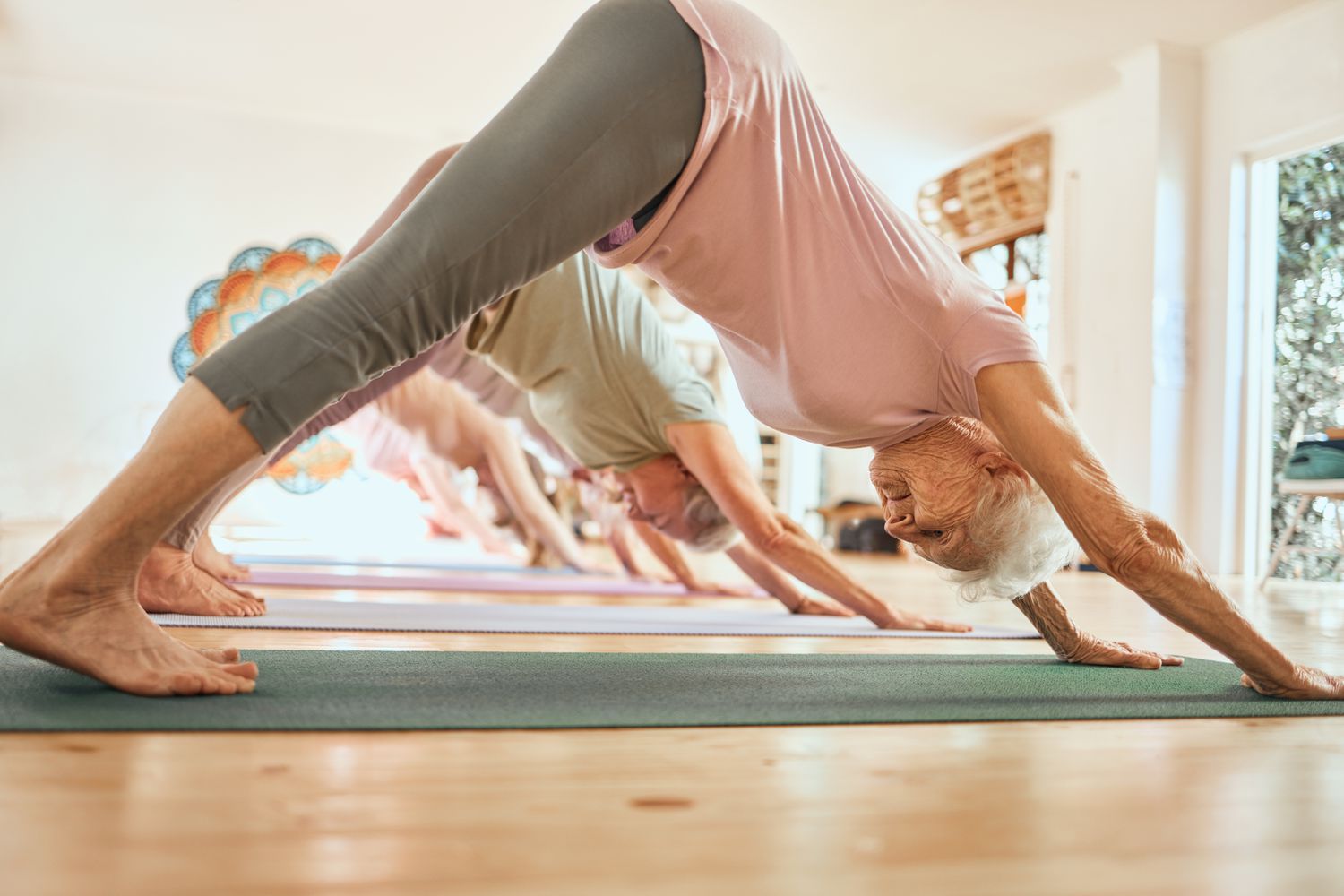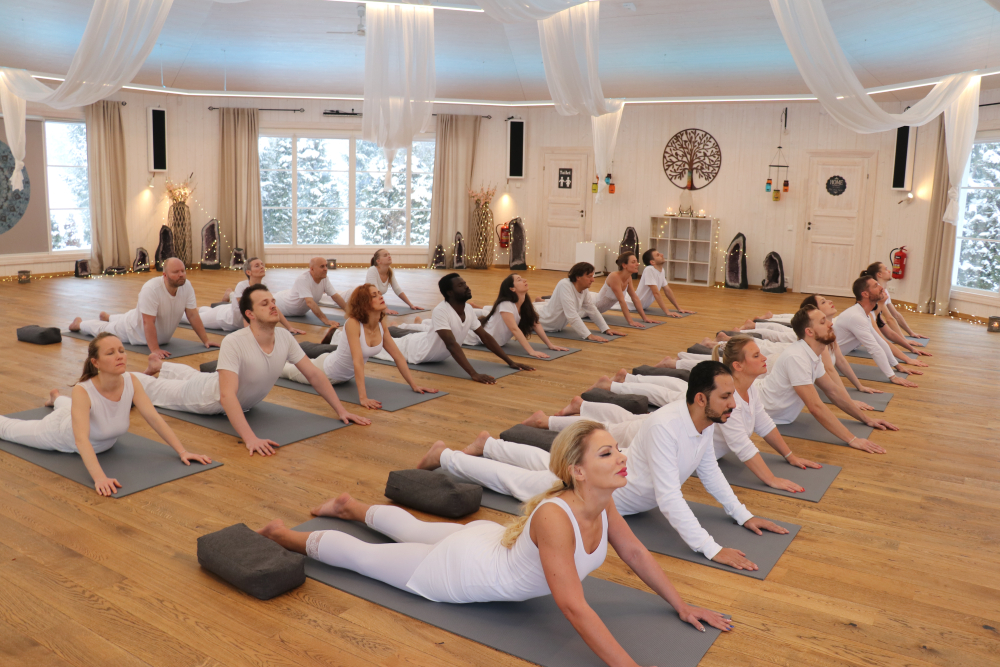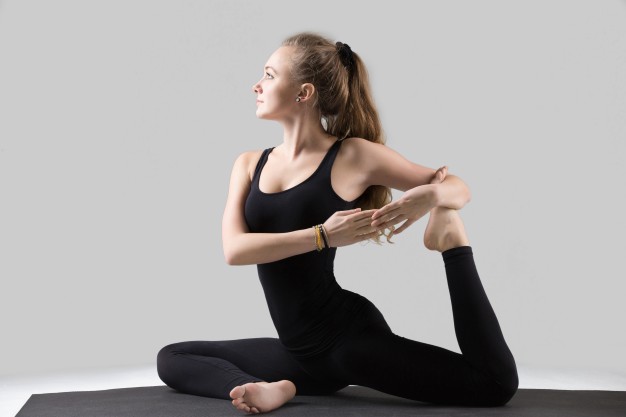Picture this: It’s a rainy Tuesday evening, and I’m sprawled on my living room floor, staring at a YouTube video of someone twisting into what looks like a human pretzel. My first attempt at yoga? A total flop. I toppled over in Tree Pose like a felled oak, giggling through the awkwardness while my cat judged me from the couch. That was five years ago, and now? Yoga’s my secret weapon against the chaos of deadlines, family dinners gone wrong, and those nagging “what if” thoughts that sneak in at 2 a.m. If you’re eyeing your mat with equal parts curiosity and dread, stick with me. This isn’t just about bending—it’s about breathing easier in a world that rarely lets you.
Unlocking the Physical Benefits of Yoga
Yoga isn’t some elite club for the bendy elite; it’s a gentle nudge toward a stronger, more resilient body. Over time, those flows and holds weave real changes, from looser hamstrings to a spine that doesn’t protest every morning coffee run. I’ve felt it myself—after months of consistent practice, hiking up that steep trail felt less like a punishment and more like a playful jaunt.
Boosting Flexibility and Strength Without the Gym Grind
Think of flexibility as your body’s “yes, I can” attitude—it lets you reach the top shelf without a step stool drama. Yoga eases you into stretches that lengthen muscles safely, while building quiet strength in your core and limbs. No heavy weights needed; just your breath guiding the way.
- Hamstring hugs: Poses like Forward Fold soften those tight backs of your legs, cutting down on that post-sit stiffness.
- Core quiet builders: Planks and boats tone without the burnout, leaving you steadier on your feet.
- Joint joy: Gentle twists lubricate hips and shoulders, warding off the creaks of desk life.
Studies back this up—regular yoga can rival traditional strength training for muscle gains in beginners. It’s like giving your body a loving tune-up, one pose at a time.
Enhancing Balance and Posture for Everyday Wins
Ever catch yourself slouching over your phone, only to straighten up with a wince? Yoga flips that script by training your body to align naturally. Balance poses sharpen your focus on stability, turning wobbles into confident strides. For me, it meant waving goodbye to those end-of-day neck kinks from hunching over emails.
Heart Health and Beyond: Yoga’s Deeper Physical Perks
Your heart doesn’t just pump blood—it thrives on calm rhythms too. Yoga dials down blood pressure and boosts circulation, like a chill pill for your cardiovascular system. Research from Johns Hopkins shows it supports everything from better sleep to immune boosts, making those seasonal sniffles less of a saga. It’s the low-key hero your body didn’t know it needed.
The Mental Magic: How Yoga Rewires Your Mind
Beyond the sweat, yoga whispers to your worries, inviting them to loosen their grip. It’s that friend who listens without interrupting, leaving you lighter and more centered. In my early days, I’d unroll my mat frazzled from work; 20 minutes later, the fog lifted, replaced by a soft clarity that stuck around for hours.
Stress Buster: Taming the Inner Tornado
Life’s storms don’t vanish, but yoga hands you an umbrella. Through deep breaths and mindful holds, it activates your body’s relaxation response, slashing cortisol levels that fuel anxiety. Picture exhaling the day’s drama—I’ve done it mid-argument with rush-hour traffic, emerging oddly zen.
Sharper Focus and Sweeter Dreams
Ever chase sleep like it’s playing hide-and-seek? Yoga’s breathing tricks quiet the mental chatter, paving the way for deeper rest. It sharpens concentration too, turning scattered thoughts into laser focus. Science agrees: Practitioners report better mood and cognitive edge, with one study linking it to reduced depression symptoms. For me, it’s the difference between tossing all night and drifting off like a contented kid.
Emotional Resilience: Building a Kinder Inner Voice
Yoga nudges you toward self-compassion, that rare gem in a highlight-reel world. It fosters gratitude in the grind, helping you bounce back from setbacks with grace. I’ve teared up in a simple seated twist, releasing old grudges—proof it’s as much heart work as body work.
My Beginner Journey: From Clumsy to Confident
Let’s get real—I started yoga because my doctor said my stress levels were “concerning,” code for “you’re a walking knot.” Week one? Disaster. I huffed through Sun Salutations, convinced downward dog was invented by a sadist. But something clicked around session five: That rush of endorphins, the way my shoulders dropped like they’d been holding the world. Fast-forward, and it’s my non-negotiable ritual, blending with walks and the occasional dance party in the kitchen. If a self-proclaimed klutz like me can find flow, so can you. Start small, laugh at the flops, and watch the shift unfold.
Getting Started: Where to Find Your First Flow
Diving in doesn’t mean dropping cash on a fancy studio—though if you’re craving community, local spots like your city’s yoga hubs are gold. Apps shine for home practice; try Down Dog for customizable sessions or Glo for guided beginner flows—both free to dip your toes. For gear, snag a grippy mat from Amazon basics; no need for the $100 version yet. Pro tip: Morning light through your window beats any gym vibe.
Easy Yoga Poses for Beginners: Your Starter Kit
No gatekeeping here—these poses are forgiving friends, not intimidating acrobatics. They build basics without overwhelm, perfect for 10-minute sessions when life’s pulling you every which way. I’ve bookmarked them on my phone for hotel rooms or post-kiddo chaos; they’re that accessible.
| Pose Name | Quick How-To | Key Benefits |
|---|---|---|
| Mountain Pose (Tadasana) | Stand tall, feet hip-width, arms at sides. Roll shoulders back, gaze forward. Breathe deep for 5 counts. | Grounds you, improves posture, sparks confidence—like hitting reset on your spine. |
| Child’s Pose (Balasana) | Kneel, sit back on heels, fold forward with arms extended. Forehead to mat, relax for 1 minute. | Eases back tension, calms nerves—a mini-vacay for your frazzled self. |
| Downward-Facing Dog (Adho Mukha Svanasana) | From hands and knees, lift hips high, forming an inverted V. Pedal feet to warm calves. Hold 30 seconds. | Stretches hamstrings, strengthens arms—your full-body energizer. |
| Tree Pose (Vrksasana) | Balance on one foot, place other sole on inner thigh (not knee). Hands to prayer at chest. Switch sides. | Boosts balance, focus—wobbly at first, warrior later. |
| Warrior I (Virabhadrasana I) | Lunge forward, back heel down, arms overhead. Square hips, hold 20 seconds per side. | Builds leg strength, opens chest—empowerment in motion. |
| Cat-Cow (Marjaryasana-Bitilasana) | On all fours, alternate arching and rounding spine with breath. Flow 5 rounds. | Warms spine, relieves desk hunch—playful and purr-fect. |
| Corpse Pose (Savasana) | Lie flat, palms up, eyes closed. Scan body for tension, melt into mat for 5 minutes. | Deep relaxation, integrates practice—like a hug from within. |
These gems come from trusted guides like Verywell Fit, where pros break them down visually. String them into a sequence: Start in Mountain, flow to Cat-Cow, hit the warriors, wind down in Child’s and Savasana. Boom—your mini practice.
Mountain Pose: The Foundation of It All
This one’s deceptively simple, like standing in line at the coffee shop—but with intention. It aligns your whole frame, teaching you to root down while reaching up. Beginners love it because it’s static yet alive; I use it to shake off morning grogginess, feeling taller by the third breath.
Child’s Pose: Your Go-To Reset Button
When the world spins too fast, fold here and let it all go. It’s a surrender that cradles your forehead against the mat, easing forehead furrows from overthinking. My go-to after a tough call—five breaths, and I’m reborn, softer around the edges.
Downward-Facing Dog: The Upside-Down Energizer
Ah, the iconic one that makes you feel like a stretchy pup. Push those hips skyward, and suddenly blood flows freer, worries invert. Don’t sweat perfect heels; it’s about the stretch, not the show. I chuckle remembering my early grunts—now it’s pure invigoration.
Tree Pose: Wobble Your Way to Steadiness
Balance is yoga’s cheeky teacher, and Tree is its star pupil. Press that foot in, steady your gaze, and teeter like life’s little jokes. It builds not just ankles but that inner poise; mine improved after a month, turning grocery juggling into grace.
Warrior I: Channel Your Inner Hero
Step into this lunge and own the space—front knee bent, back leg strong, arms victorious overhead. It fires up thighs and heart alike, a nod to ancient fighters. For beginners, shorten the stance; I started knee-high and felt fierce anyway.
Pros and Cons of Incorporating Yoga into Your Routine
Yoga’s no magic bullet, but weighing its ups and downs helps you commit wisely. It’s transformed my weeks from frantic to fluid, yet I won’t sugarcoat the hiccups.
Pros:
- Accessibility: Do it anywhere—park, plane, or pillow fort—with minimal gear.
- Holistic payoff: Hits body, mind, soul in one go, outshining solo runs for stress zap.
- Scalable fun: From 5-minute breaths to hour-long flows, it grows with you.
- Community vibe: Classes foster friends who get your “namaste” struggles.
Cons:
- Time thief: Carving out slots feels luxe when schedules scream “no.”
- Injury whisper: Push too hard, and tweaks happen—listen to your body, always.
- Cost creep: Studios add up; free apps help, but quality mats aren’t cheap.
- Plateau puzzle: Early wins fade; variety keeps it spicy.
Comparison: Yoga vs. Traditional Cardio for Beginners
Wondering if yoga edges out your treadmill trot? Both shine, but here’s the showdown for newbies chasing wellness.
| Aspect | Yoga | Cardio (e.g., Jogging) |
|---|---|---|
| Stress Relief | Wins big—breaths melt tension like butter. | Solid endorphin hit, but mind races if unchecked. |
| Flexibility | Star player; poses unlock limbs gently. | Minimal stretch; add-ons needed. |
| Strength Build | Subtle core and posture gains. | Heart-pumping endurance, less targeted tone. |
| Injury Risk | Low if mindful; overstretch foe. | Joint jar if pounding pavement wrong. |
| Beginner Friendliness | Inviting—no speed demons here. | Intimidating pace for couch starters. |
Yoga’s my pick for balanced bliss, but blend ’em for the win. Check Harvard Health’s take for more science.
People Also Ask About Yoga
Google’s got the pulse on our curiosities—here’s what folks wonder most, with straight-talk answers drawn from real searches.
- Why do people practice yoga? Beyond the Instagram glow, it’s for that soul-soothing blend of strength, calm, and connection. Surveys show flexibility tops lists (nearly 97% cite it), but mental peace seals the deal for many. It’s less “woo-woo” and more “I slept like a rock.”
- What are the main benefits of starting yoga? Physically, expect looser muscles and steadier balance; mentally, it’s a shield against burnout. One study found it rivals therapy for anxiety dips. Beginners notice mood lifts in weeks.
- Is yoga suitable for absolute beginners? Absolutely—it’s designed for “yes, but” folks. Start with Hatha style for slow, safe intros; no prior bends required. My tip: Embrace the giggle in your first wobble.
- How often should beginners practice yoga? Three times a week hits sweet spot for gains without overwhelm. Even 10 minutes daily builds habits—consistency trumps marathon sessions.
- Can yoga help with weight loss? Indirectly, yes—through mindful eating cues and boosted metabolism. Pair with walks for punch; it’s no quick-fix but a sustainable ally.
Frequently Asked Questions
Got lingering “buts”? These cover the chatter from newbie forums and my own Q&A with friends just like you.
What exactly is yoga, anyway? At its core, it’s an ancient practice blending breath, movement, and mindfulness for whole-you harmony. Not just poses—think philosophy meets flow. For beginners, it’s stress-free entry to feeling fabulous.
I’m not flexible at all—will yoga judge me? Honey, yoga’s the least judgy crew around. It meets you where you are; flexibility blooms with time. I started stiffer than cardboard—now I touch my toes without a grudge match.
What’s the best yoga style for total beginners? Hatha or gentle Vinyasa—slow, foundational, and forgiving. Apps like Yoga for Beginners on YouTube make it dummy-proof. Avoid hot yoga till you’re hooked.
How do I avoid common beginner mistakes? Breath first—don’t hold it like a secret. Modify with props (blocks are MVPs), and skip ego; pain’s your stop sign. My blunder? Forcing splits—lesson learned the hamstring way.
What gear do I need to start yoga at home? Just a mat for grip and a quiet corner. Add blocks or straps for ease—Amazon’s beginner kit under $30. Clothes? Whatever moves without pinching.
There you have it—no fluff, just the good stuff to roll out that mat and rewrite your “busy” into “balanced.” Remember my rainy-floor fumble? It led here, to mornings where I greet the sun with a smile instead of a sigh. Your turn: Pick one pose, breathe through the butterflies, and let yoga surprise you. What’s stopping you? Drop a comment below—I’d love to cheer your first flow. Namaste, friend—see you on the mat.




